With a conditional order for 100 Heart Aerospace ES-19 airliners, United Airlines has placed another big bet on the future size and shape of its aircraft fleet, with an emphasis on electrically powered airliners and investments in what it has described as “emerging technologies that decarbonise air travel”. The US major announced an agreement to acquire 100 ES-19s, a 19-seater being developed by Sweden’s Heart Aerospace, while its regional partner Mesa Airlines placed its own conditional order for a further 100 units. This is United’s second commitment to electric aircraft, reports Mark Pilling. In February it revealed a deal with air mobility company Archer to help it develop the US start-up’s electric vertical take-off and landing (eVTOL) aircraft designed as an air taxi in urban markets. United and Mesa said they would buy up to 200 of Archer’s electric aircraft if it met the “operating and business requirements” of the carriers. Another start-up, ZeroAvia has also secured extra funding to accelerate its ambitions to develop a hydrogen-electric 50-seater regional aircraft.
Echoing the Archer eVTOL commitment, United and Mesa have “conditionally agreed to purchase 100 ES-19 aircraft [each], once the aircraft meet United’s safety, business and operating requirements”. United Airlines said it has invested an undisclosed sum in start-up Heart Aerospace through its new corporate venture capital fund, United Airlines Ventures (UAV). Also investing is Breakthrough Energy Ventures (BEV), a fund that backs firms with emission reduction strategies in various industries, and Mesa Airlines.
“Breakthrough Energy Ventures is the leading voice of investors who are supporting clean-energy technology creation. We share their view that we have to build companies who have real potential to change how industries operate and, in our case, that means investing in companies like Heart Aerospace who are developing a viable electric airliner,” said Michael Leskinen, United’s VP Corporate Development & Investor Relations, as well as UAV’s President. “We recognise that customers want even more ownership of their own carbon emissions footprint. We are proud to partner with Mesa Air Group to bring electric aircraft to our customers earlier than any other US airline. Mesa’s long-serving CEO, Jonathan Ornstein has shown visionary leadership in the field of electric-powered flight.” Ornstein is an advisor to Heart Aerospace.
UAV and BEV are among the first investors in Heart Aerospace, demonstrating confidence in Heart’s design and creating potential for the company to fast track the ES-19 introduction to market. Heart, which is based in Gothenburg, Sweden, is aiming for the ES-19 to be certified for commercial operations by 2026. The high-wing 19-seater will feature four wing-mounted propellers powered by lithium-ion batteries and will have a range of 400km.
“Electric aircraft are happening now—the technology is already here,” said Anders Forslund, CEO of Heart Aerospace. “I can’t imagine a stronger coalition of partners to advance our mission to electrify short-haul air travel.”
Aviation is a critical piece of the global economy, said Carmichael Roberts, Business Lead, Investment Committee at Breakthrough Energy, which was founded in 2015 by Microsoft’s Bill Gates and a coalition of private investors concerned about the impacts of accelerating climate change. “At the same time, it’s a major source of carbon emissions and one of the most difficult sectors to decarbonise. We believe electric aircraft can be transformational in reducing the emissions of the industry, and enable low-cost, quiet and clean regional travel on a broad scale. Heart’s visionary team is developing an aircraft around its proprietary electric motor technology that will allow airlines to operate at a fraction of the cost of today and has the potential to change the way we fly.”
According to United, the ES-19 could operate on more than 100 of United’s regional routes out of most of its hubs. Some of these routes include Chicago O’Hare International Airport to Purdue University Airport and San Francisco International Airport to Modesto City-County Airport.
“We expect the short-haul regional air travel market to play a key role in the evolution of the electric aircraft. As battery technology improves, larger-gauge aircraft should become viable but we’re not going to wait to begin the journey,” said Leskinen of United. “That’s why we’re looking forward to beginning our work with Heart, so that together, we can scale the availability of electric airliners and use them for passenger flights within the next five years.”
Over the past several months, United has carried out a series of ambitious moves. In late June the airline made what it said was its largest ever order, and biggest by a single carrier in decade, for 200 Boeing Max 737s and 70 Airbus A321neos. In early June, just weeks before the major announcement to upgrade its short-haul fleet, United said it would buy 15 supersonic 65-88 seat Overture jetliners from Boom Aerospace.
On the sustainability front, in April United announced the formation of its Eco-Skies Alliance programme which “allows corporate customers the opportunity to pay the additional cost for sustainable aviation fuel”. Last December, United announced a multi-million dollar investment in direct air capture (DAC) technology rather than purchasing carbon credits to offset residual emissions. The investment is being made in 1PointFive, a partnership between Oxy Low Carbon Ventures, a subsidiary of Occidental, and Rusheen Capital Management, which is using technology licensed from Carbon Engineering in the first industrial-sized DAC plant in the United States. United is also one of the largest off-takers of sustainable aviation fuel and has invested $30 million in SAF producer Fulcrum BioEnergy, which has just completed construction of its first-of-a-kind Sierra municipal solid waste to jet fuel plant in Nevada
Although it does not have airline commitments yet, another start-up, ZeroAvia, recently announced it had raised additional funding and secured two aircraft for research and development of clean hydrogen-electric aviation. The company will use two twin-engine 19-seat Dornier 228 aircraft – one in the UK and one in the US, acquired from Aurigny and AMC Aviation.
ZeroAvia’s 19-seat aircraft development project is part of HyFlyer II, the second ZeroAvia-led project backed by the UK government to target the development of a hydrogen fuel cell powertrain. As part of HyFlyer I, ZeroAvia said it successfully demonstrated a 250kW powerplant in a six-seat aircraft across three flight test campaigns, achieving all the project’s technical goals, including fuel cell-only cruise flight. The learnings of HyFlyer I will be utilised in the development of a 600kW 19-seater powerplant in HyFlyer II.
ZeroAvia has also secured an additional £9.3 million ($13 million) for its 50+ seat engine development programme from AP Ventures, an investor in breakthrough technologies across the hydrogen value chain, Alumni Ventures Group, SGH Capital, Agartha Fund LP, and existing investors Amazon’s Climate Pledge Fund, Breakthrough Energy Ventures, Summa Equity, Shell Ventures, SYSTEMIQ and Horizons Ventures. This new funding complements the initial investment of $24 million the company announced earlier this year, bringing the total private investment into ZeroAvia’s large engine development for 50+ seat aircraft to $37 million.
“We are eager and ready to begin testing our hydrogen-electric powertrain technology on a larger commercial-size aircraft, and grateful to our investors and grant funders for their continued support of our vision for sustainable aviation,” said Val Miftakhov, Founder and CEO at ZeroAvia. “Various projections indicate that aviation may account for over 25% of human-induced climate effects by 2050. We are on the path to helping reverse that trend, first with our successful six-seater testing and now with the R&D for our 19-seater, and the kick-off of our 50+ seat programme. Hydrogen is the only practical solution for true climate-neutral flight, and it will become a commercial reality much sooner than many predict.”
Image: Heart Aerospace ES-19 in United Express livery, the regional brand of United Airlines


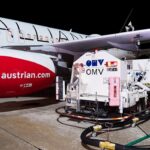

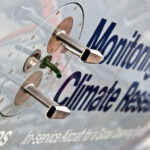



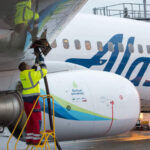
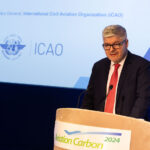



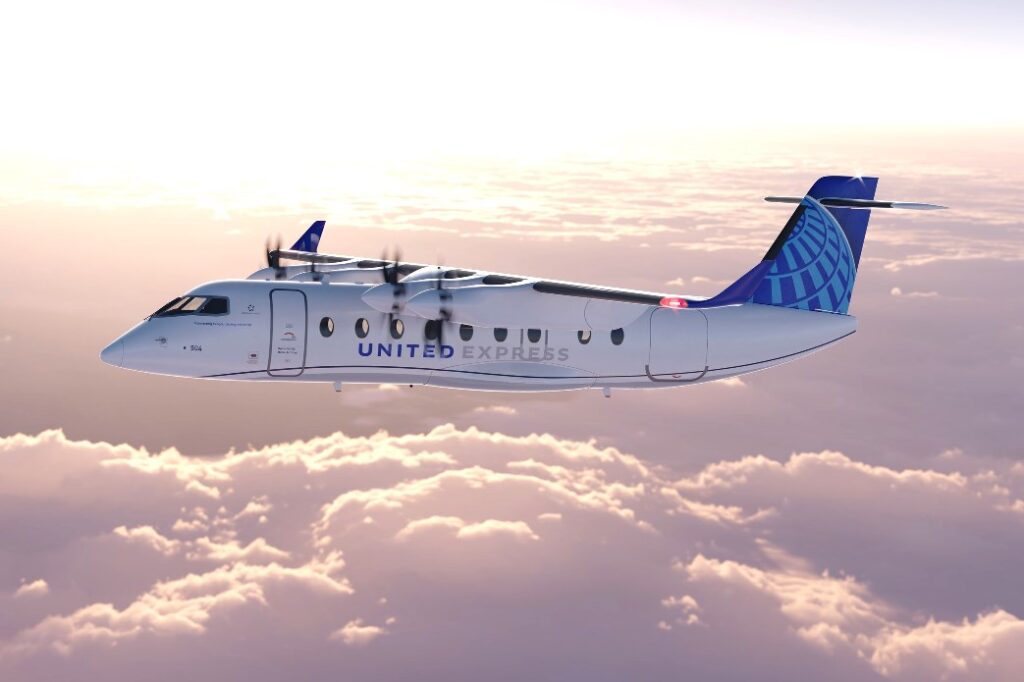
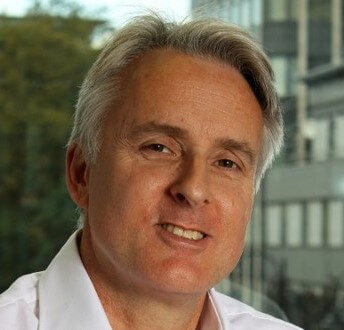

More News & Features
Carbon reduction consultancy Watershed facilitates SAF certificate deals through SABA
IAG continues to go big on e-SAF as it inks 10-year offtake agreement with Infinium
US on the pathway to achieving its 2030 SAF Grand Challenge target, says DOE report
Infinium and Twelve raise a total of up to $1.7 billion towards eSAF production
AIR COMPANY raises $69 million to advance its industrial CO2-to-SAF process
Heart Aerospace unveils full-scale 30-seat hybrid-electric aircraft demonstrator